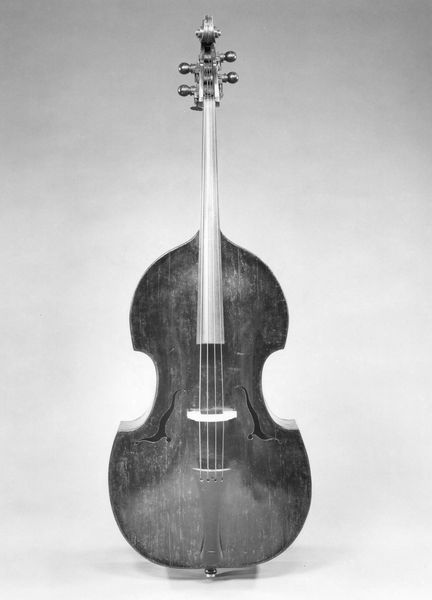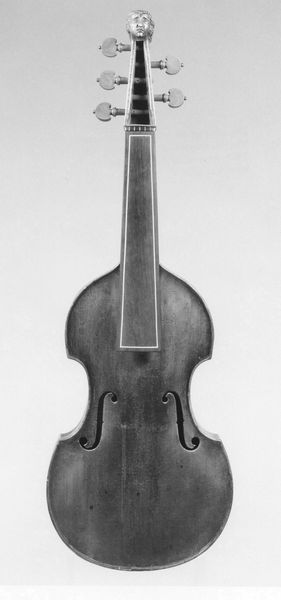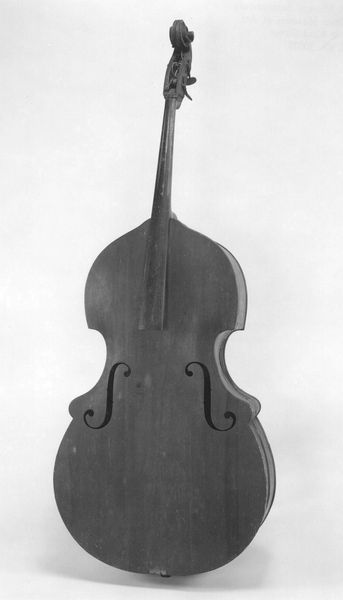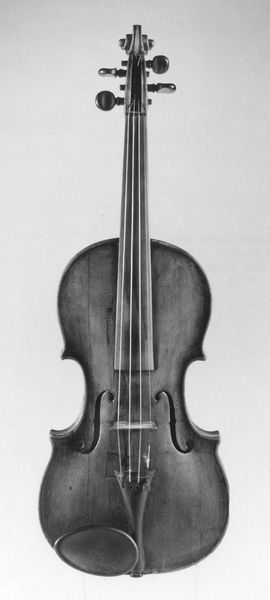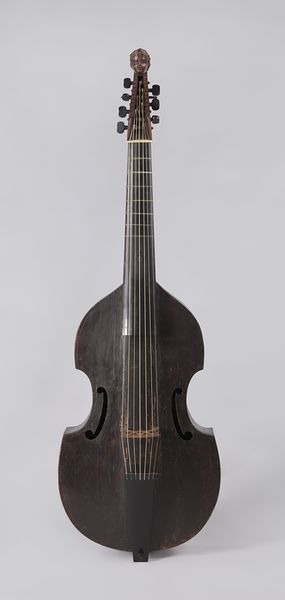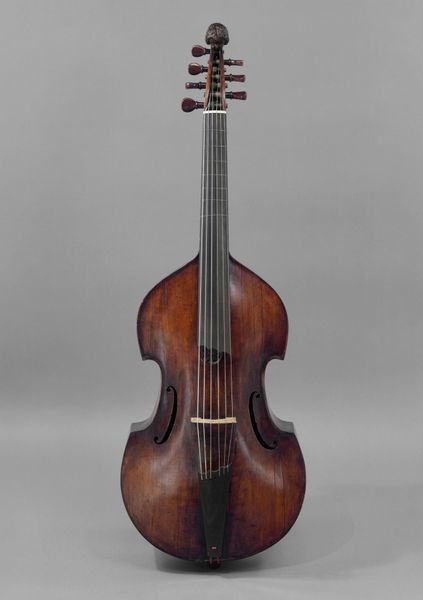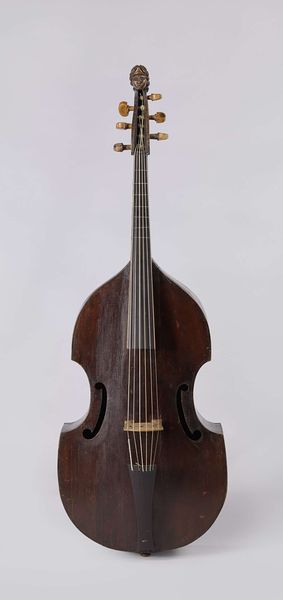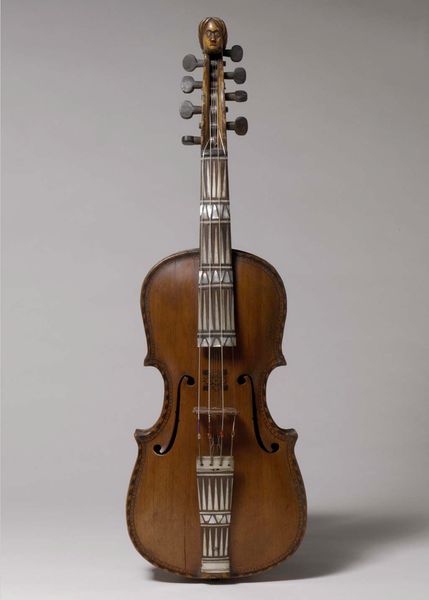
Dimensions: Overall: 67.5cm (26 9/16in.)
Copyright: Public Domain
Curator: Just feast your eyes on this remarkable piece, “Quinton d’Amore,” an 18th-century sculpture currently housed in the Metropolitan Museum of Art. It’s a Baroque-style instrument, primarily crafted from wood. Editor: Immediately, it gives me a rather sorrowful impression. Almost as if the instrument has seen—or heard—too much. But, what's with the head up there? Is that supposed to be a deity of some sort? Curator: Yes! The carving on the pegbox features the image of a woman, like some silent guardian, overlooking every note ever played on those strings. D'amore instruments in particular carried these iconic adornments as a form of personification—of the spirit that moves throughout song and the arts. Editor: Interesting. So, the female head is representative of love? It feels almost contradictory to the subdued nature I initially sensed. Curator: Think about baroque music and the period, itself, for a moment. All those frills! Think of those ornamental twists. This instrument would represent both sides: its sonic quality and it’s physical beauty. That juxtaposition mirrors life— joy tempered with pain. It’s baroque in its purest form, a dramatic statement wrought from simple wood. The love of life and music and how inextricably connected those ideals could become! Editor: And now, reflecting upon that symbolism, I sense something akin to resilience too. Even faded, silent now, the craftsmanship tells stories beyond melody alone. Curator: Indeed, and that, my friend, is the enduring enchantment woven within this instrument’s very grain. What was originally a song and sound, soon becomes our own personal memories. It serves as our shared narrative, a story we can learn together, listen to with intent and share in an entirely new way.
Comments
No comments
Be the first to comment and join the conversation on the ultimate creative platform.
